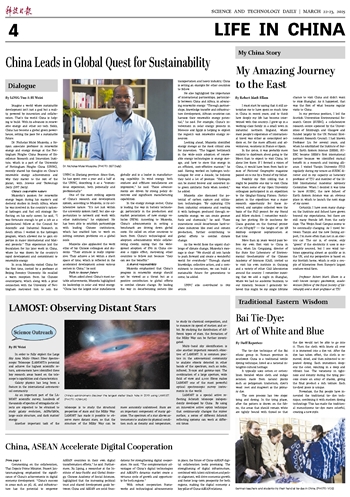
 |
| German teachers and students try their hand at tie-dye in China. (PHOTO: VCG) |
The tie-dye technique of the Bai ethnic group in Yunnan province in southwest China is a traditional textile dyeing technique, listed as a national intangible cultural heritage.
It typically uses cotton or cotton-linen blended white cloth and indigo solution made from natural plants such as polygonum tinctorium, dyer's woad root and mugwort as the primary dye.
The core process has two steps: tying and dyeing. In the tying phase, after the pattern is drawn on the fabric, the areas that should remain white are tightly bound with thread so that the dye would not be able to go into it. Then the cloth with knots all over it is immersed into a dye vat. After the dye has taken effect, the cloth is removed, dried, and then subjected to repeated dyeing. Each immersion deepens the color, resulting in a deep and vibrant hue. The variations in tightness and density during the tying process create an array of shades, giving the final product a rich texture. Each tie-dyed piece is unique.
Nowadays, the Bai people have innovated the traditional tie-dye technique, combining it with modern dyeing technology. This has made the traditional monochrome tie-dye more colorful, creating a new style.







